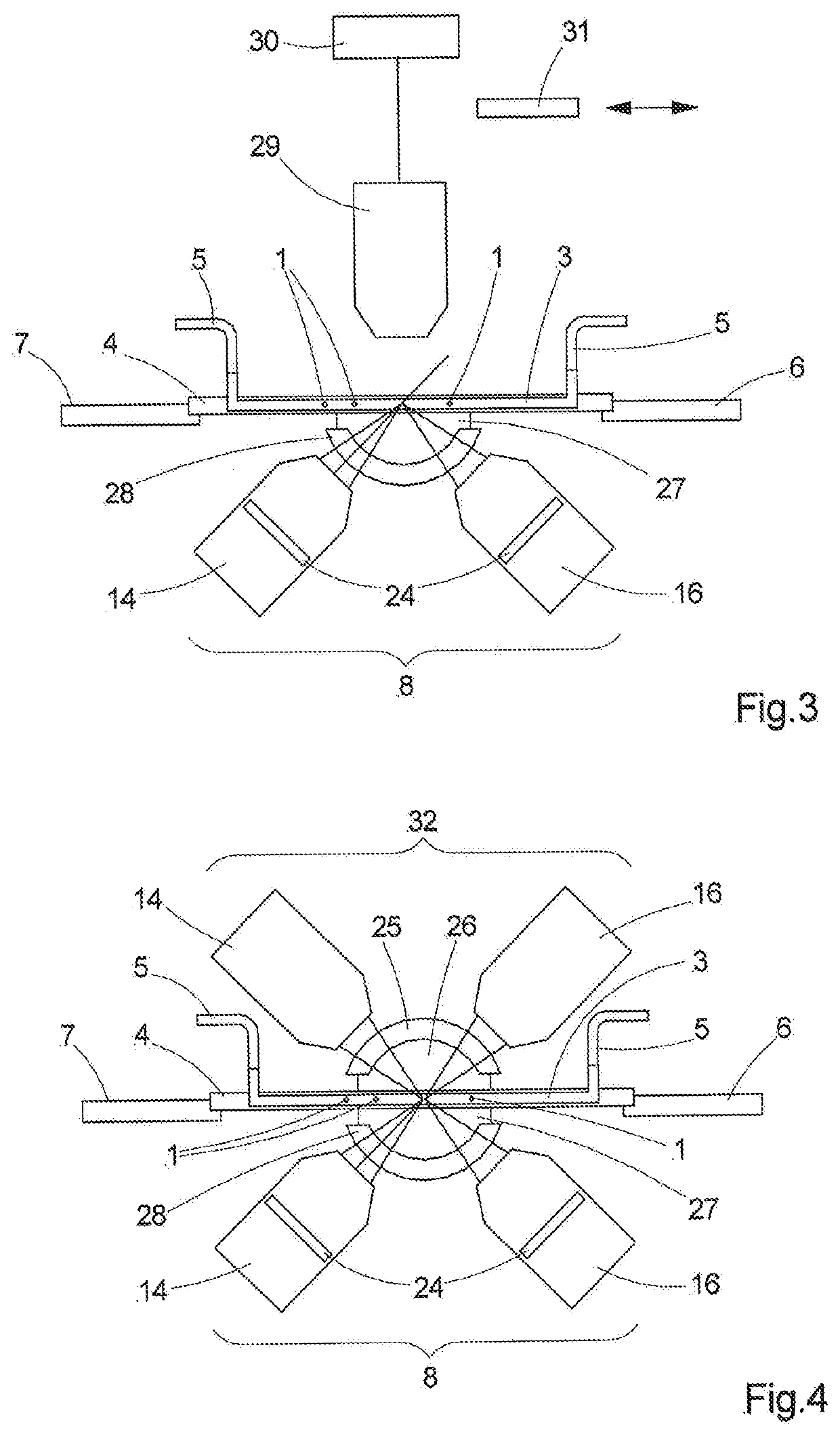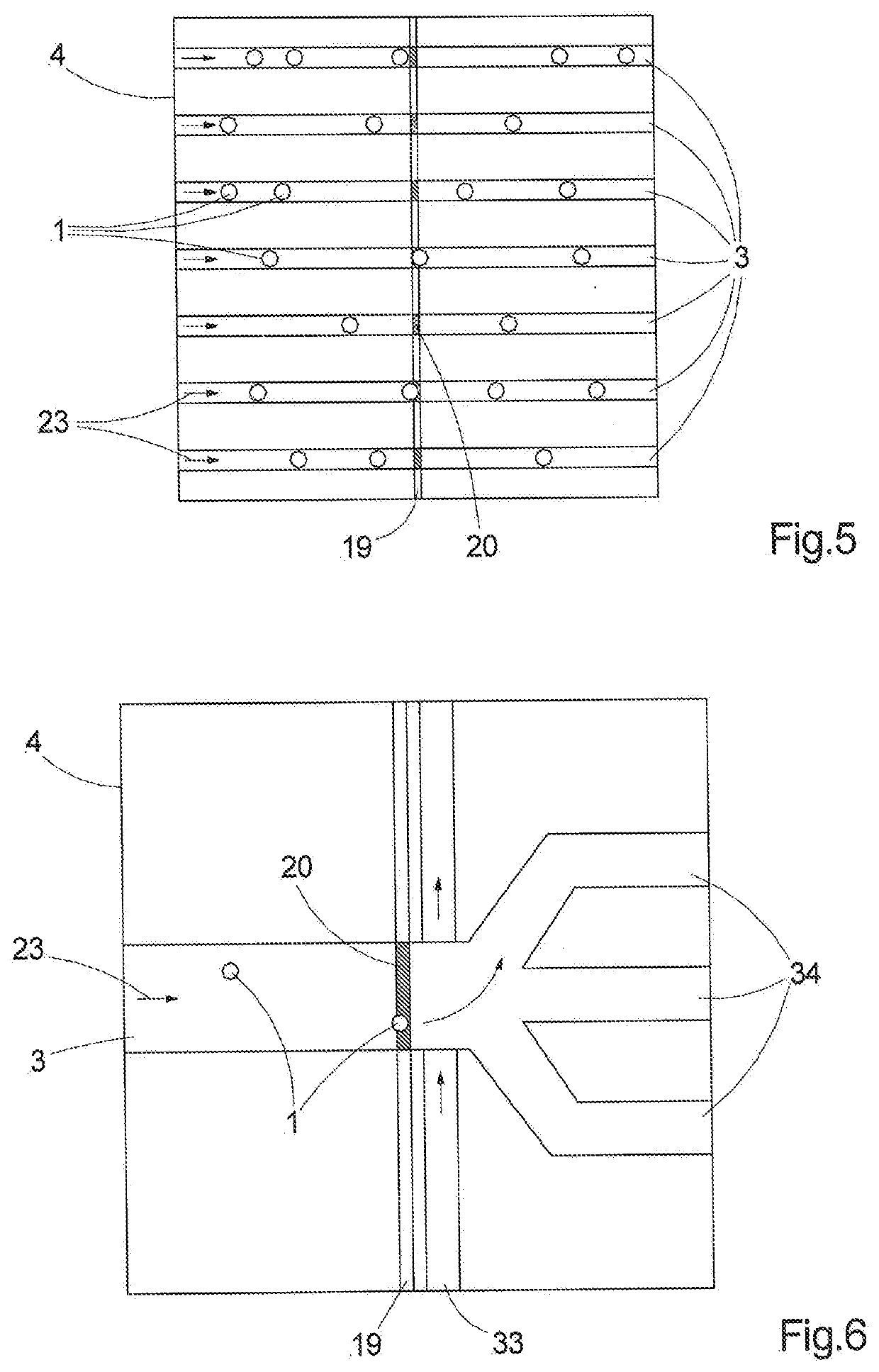Method and device for optically examining a plurality of microscopic samples
a technology of optical examination and microscopic samples, applied in the field of optical examination, can solve the problems of inability to collect two- or three-dimensional image information, general non-operational imaging, and inability to carry out imaging, so as to achieve the effect of increasing process efficiency and substantially increasing outpu
- Summary
- Abstract
- Description
- Claims
- Application Information
AI Technical Summary
Benefits of technology
Problems solved by technology
Method used
Image
Examples
Embodiment Construction
[0014]The object of the invention is to develop a method and an apparatus of the type set forth at the outset, in such a way that, firstly, there is an increase in sensitivity and flexibility in comparison with the flow cytometric methods and apparatuses known in the prior art and, secondly, the most detailed image information is made available at the same time.
[0015]For a method of the type set forth at the outset, this object is achieved by virtue of the samples being illuminated by virtue of at least one light sheet with a light sheet plane being directed on the at least one flow channel and the light sheet being aligned so that it intersects the at least one flow channel in an intersection region and the normal of the light sheet plane includes a non-zero angle with the flow direction in the intersection region. The light emitted from the samples is registered by an imaging detection optical unit, i.e., a detection optical unit that images and detects over an area, the focal pla...
PUM
| Property | Measurement | Unit |
|---|---|---|
| diameter | aaaaa | aaaaa |
| angle | aaaaa | aaaaa |
| thickness | aaaaa | aaaaa |
Abstract
Description
Claims
Application Information
 Login to View More
Login to View More - R&D
- Intellectual Property
- Life Sciences
- Materials
- Tech Scout
- Unparalleled Data Quality
- Higher Quality Content
- 60% Fewer Hallucinations
Browse by: Latest US Patents, China's latest patents, Technical Efficacy Thesaurus, Application Domain, Technology Topic, Popular Technical Reports.
© 2025 PatSnap. All rights reserved.Legal|Privacy policy|Modern Slavery Act Transparency Statement|Sitemap|About US| Contact US: help@patsnap.com



